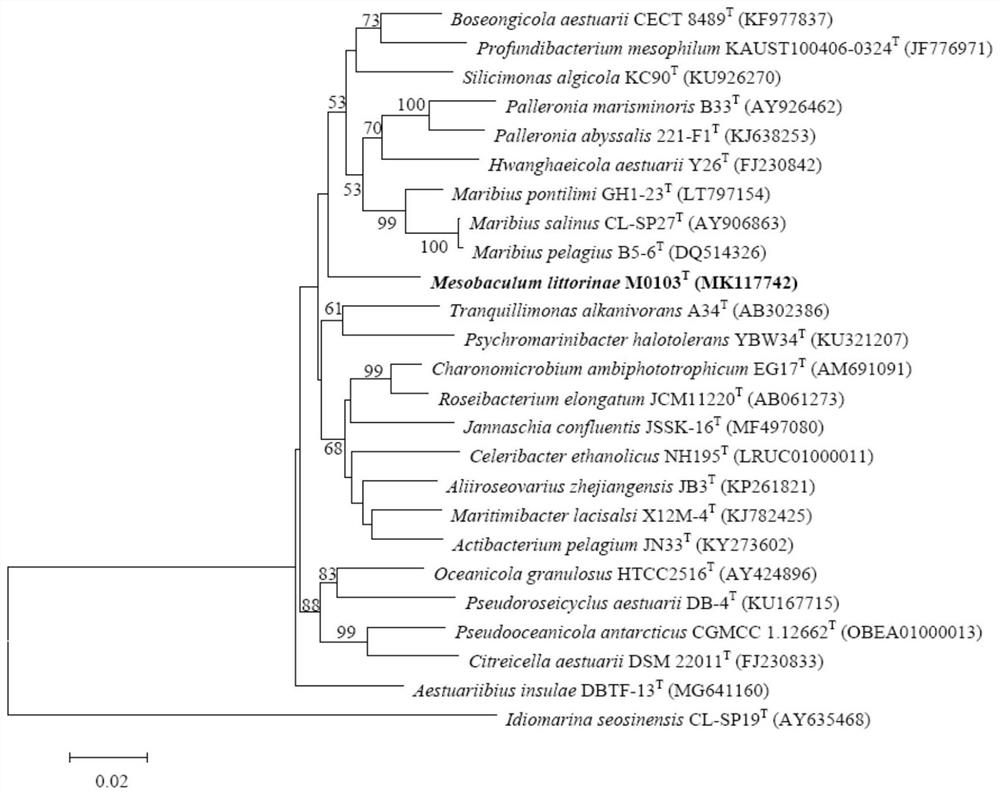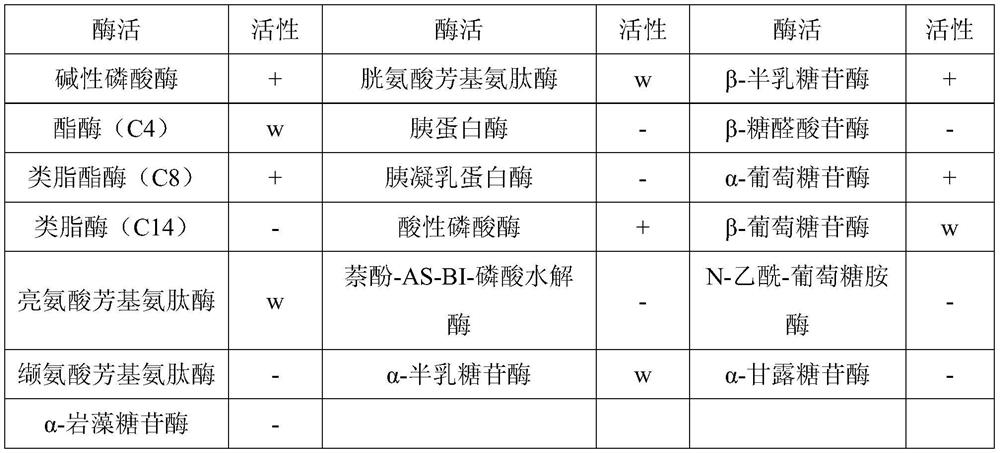A new genus strain with alginolytic ability and its application to Phaeocystis globosa
A technology of Phaeocystis globosa and strains, which is applied in the field of environmental microorganisms and can solve problems such as the negative impact of benthic organisms, non-red tide biological damage, and secondary environmental pollution.
- Summary
- Abstract
- Description
- Claims
- Application Information
AI Technical Summary
Problems solved by technology
Method used
Image
Examples
Embodiment 1
[0025] Embodiment 1, the separation and preparation of new bacterial strain M0103 of the present invention
[0026] Take the leaching solution of Lime snail tissue, dilute it and spread it on ISP4 solid medium, cultivate it at 30°C for 21 days, pick a single colony, and then streak and purify it.
[0027] Sent to the China Center for Type Culture Collection for preservation, and its preservation number is CCTCC NO:M 2019404.
Embodiment 2
[0028] Embodiment 2, the appearance characteristic of new bacterial strain M0103 of the present invention
[0029] Take a single colony of bacterial strain M0103, transfer it to ISP2+2.6% sea salt solid medium (agar), and cultivate it in a constant temperature incubator at 30°C for 48 hours, and observe the size, color, edge, protrusion, smoothness, and Viscosity, transparency and other morphological characteristics.
[0030] The results showed that the strain M0103 formed neat, slightly raised, smooth, opaque, milky white round colonies with a diameter of about 2-3mm on the solid medium of ISP2+2.6% sea salt.
Embodiment 3
[0031] Embodiment 3, the growth characteristic of new bacterial strain M0103 of the present invention
[0032] Fresh cultures cultivated on ISP2+2.6% sea salt solid medium for 24 hours were picked, inoculated into R2A liquid medium, and cultured on a shaker at 37° C. for 36 hours as seeds.
[0033] The composition of ISP2+2.6% sea salt solid medium: yeast extract powder 2.0g / L, malt extract powder 2.0g / L, glucose 2.0g / L, sea salt 26.0g / L, 1.4% agar powder, deionized water 1000mL.
[0034] R2A solid medium: yeast powder 0.5g / L, tryptone 0.5g / L, casamino acid 0.5g / L, glucose 0.5g / L, soluble starch 0.5g / L, dipotassium hydrogen phosphate 0.3g / L, seven Magnesium sulfate water 0.05g / L, sodium pyruvate 0.3g / L, agar 13.0g / L, deionized water 1000mL.
[0035] 1. Growth temperature
[0036] The culture was inoculated on ISP2+2.6% sea salt solid medium, cultured at 10°C, 15°C, 20°C, 25°C, 30°C, 37°C, 40°C and 45°C, and three parallels were made for each temperature gradient. , and obse...
PUM
 Login to View More
Login to View More Abstract
Description
Claims
Application Information
 Login to View More
Login to View More - Generate Ideas
- Intellectual Property
- Life Sciences
- Materials
- Tech Scout
- Unparalleled Data Quality
- Higher Quality Content
- 60% Fewer Hallucinations
Browse by: Latest US Patents, China's latest patents, Technical Efficacy Thesaurus, Application Domain, Technology Topic, Popular Technical Reports.
© 2025 PatSnap. All rights reserved.Legal|Privacy policy|Modern Slavery Act Transparency Statement|Sitemap|About US| Contact US: help@patsnap.com


